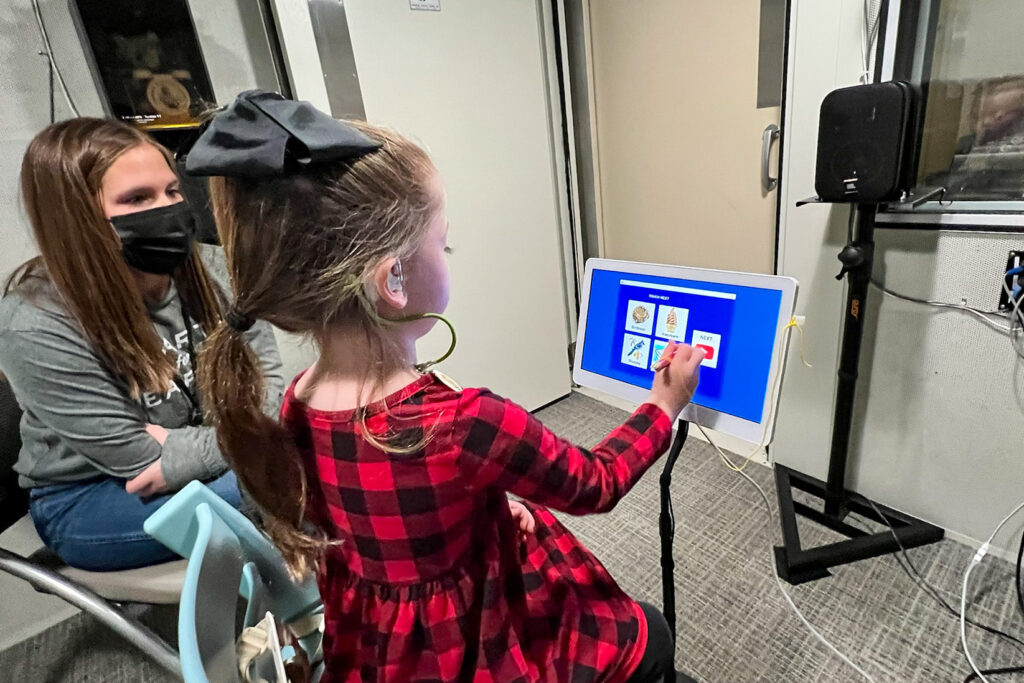Director of Washington University’s Cochlear Implant Program Jill Firszt, PhD, is no stranger to studying single-sided deafness and asymmetric hearing loss in adults. Her previous work demonstrated the benefits of cochlear implants in these patients and helped provide critical data needed to promote the adoption of expanded implant criteria by the FDA.
Firszt has now turned her attention to children with single sided deafness and asymmetric hearing loss. According to Firszt, this has been a long under-served population due to the belief that one hearing ear was sufficient for adequate communication and normal development.
“Children are not just small adults with the same problem,” said Firszt. “Their hearing loss typically starts at birth or at a young age and is often due to different causes, like abnormalities of the inner ear or genetic mutation. Their brains are also still developing as they acquire hearing and language skills.”

Much of a child’s development occurs in very complex auditory environments, explained Firszt. Auditory exposures in the classroom, playground, cafeteria and other noisy environments comprise much of a child’s day. Binaural (both ears) cues are essential for understanding speech in noise and for locating sounds in these environments. These binaural cues are severely degraded in children with asymmetric hearing loss, and a cochlear implant is the only treatment that can provide hearing to an ear with severe to profound hearing loss.
The clinical trial, approved by the FDA and funded by the NIH, includes a hearing aid phase, where recent hearing aid technology is assessed, followed by a cochlear implant phase. The clinical trial has a target enrollment of 40 children with single sided deafness and 40 children with asymmetric hearing loss, making it one of the largest clinical trials in this population. The study has two goals:
- Examine the efficacy of a cochlear implant for the poor ear by comparing post-implant performance with pre-implant performance with a hearing aid; and
- Evaluate the benefits of bimodal hearing, defined as a cochlear implant in the poor ear and a hearing aid or normal hearing in the better ear.
Study assessments include tests such as speech recognition in noise, soft (low level) speech recognition, sound localization, and quality of life metrics. Data are collected pre-implant through 15-months post-implant. The outcomes seek to provide crucial data on the development of binaural hearing abilities in these children and support the development of a standardized treatment program.
To date the study has enrolled 22 children. Thirteen children have completed the hearing aid phase, 11 have had cochlear implant surgery, and 6 have completed the 6-month post implant test interval. In this multi-center clinical trial, WUSM is the sponsor, and additional participating sites involved in patient selection and data collection are St. Louis Children’s Hospital, University of Southern California, Children’s Hospital of Philadelphia, Hearts for Hearing in Oklahoma City, and University of Minnesota.
For more information about this study, please contact Jill Firszt, PhD or visit clinicaltrials.gov.
You can also check out some of the additional ongoing cochlear implant research in the Department of Otolaryngology at WashU:
Cochlear implants turn ‘hearing back on’ for patients with single-sided deafness
ENT researcher works to optimize benefits of cochlear implants in children
Grant awarded to Washington University researchers to study cochlear implant use
